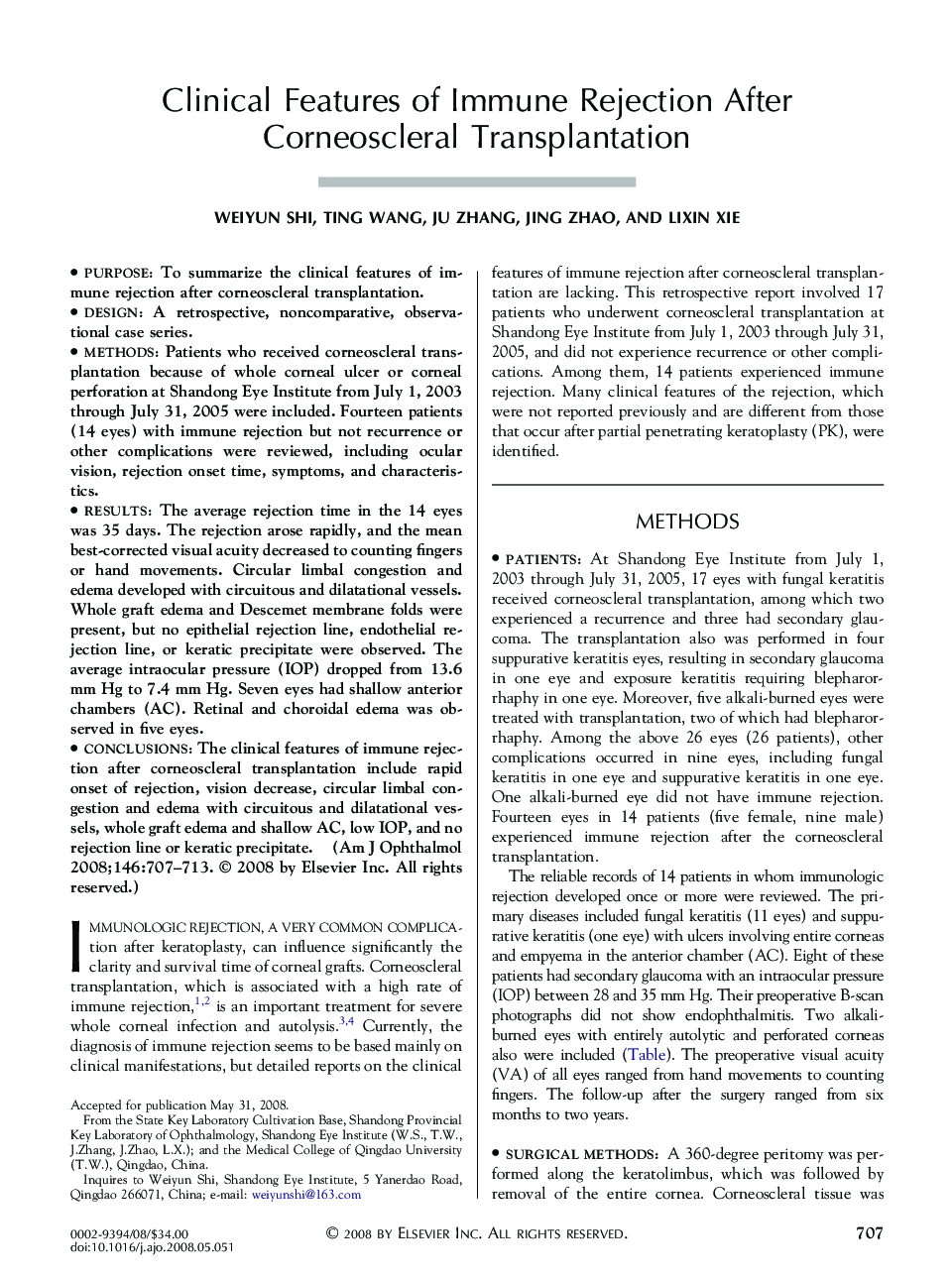| Article ID | Journal | Published Year | Pages | File Type |
|---|---|---|---|---|
| 4004511 | American Journal of Ophthalmology | 2008 | 7 Pages |
PurposeTo summarize the clinical features of immune rejection after corneoscleral transplantation.DesignA retrospective, noncomparative, observational case series.MethodsPatients who received corneoscleral transplantation because of whole corneal ulcer or corneal perforation at Shandong Eye Institute from July 1, 2003 through July 31, 2005 were included. Fourteen patients (14 eyes) with immune rejection but not recurrence or other complications were reviewed, including ocular vision, rejection onset time, symptoms, and characteristics.ResultsThe average rejection time in the 14 eyes was 35 days. The rejection arose rapidly, and the mean best-corrected visual acuity decreased to counting fingers or hand movements. Circular limbal congestion and edema developed with circuitous and dilatational vessels. Whole graft edema and Descemet membrane folds were present, but no epithelial rejection line, endothelial rejection line, or keratic precipitate were observed. The average intraocular pressure (IOP) dropped from 13.6 mm Hg to 7.4 mm Hg. Seven eyes had shallow anterior chambers (AC). Retinal and choroidal edema was observed in five eyes.ConclusionsThe clinical features of immune rejection after corneoscleral transplantation include rapid onset of rejection, vision decrease, circular limbal congestion and edema with circuitous and dilatational vessels, whole graft edema and shallow AC, low IOP, and no rejection line or keratic precipitate.
